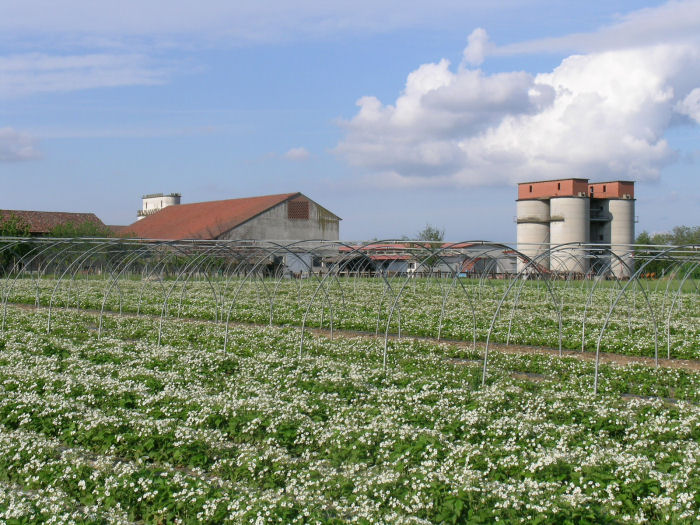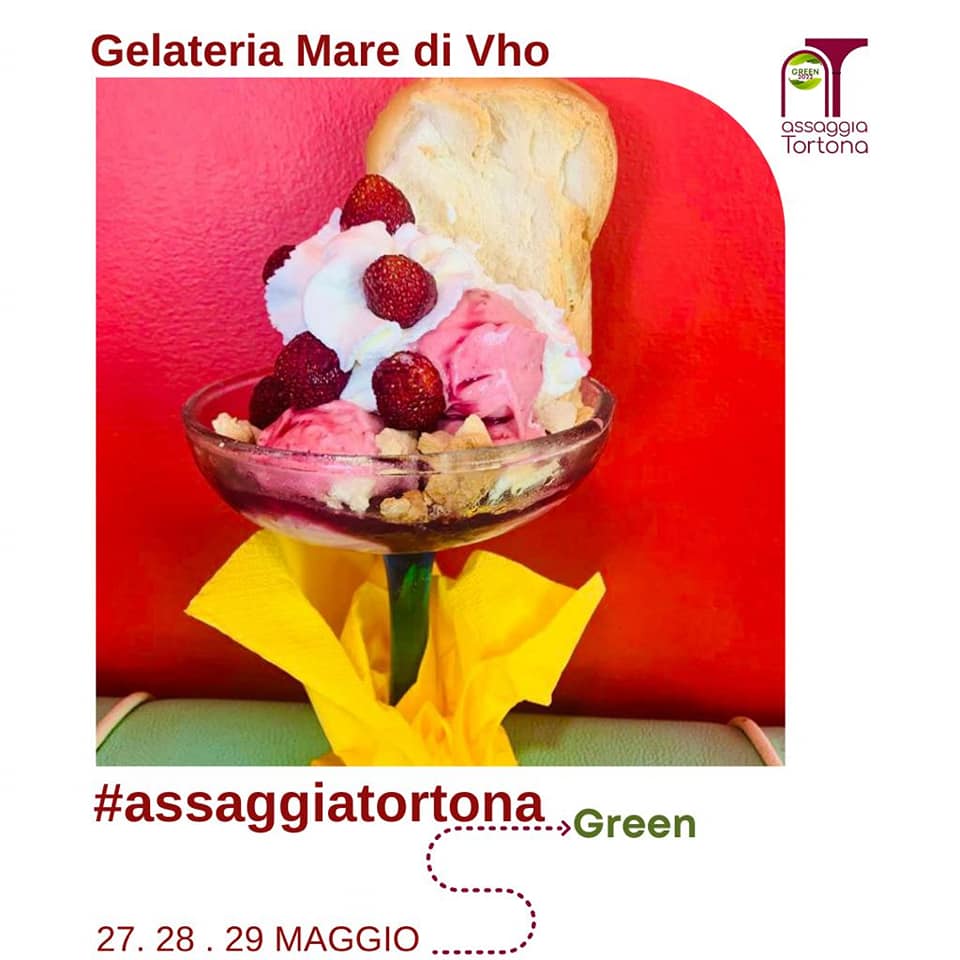"The Tortona Strawberry has a very short harvest period, we are talking about 15 days, it is like a meteor": this is how Patrizia Lodi, one of the main producers of a fruit that is truly unique for its taste characteristics, defines it. Let's discover together the fascinating history of this Italian excellence.
Summary
ORIGIN AND DISSEMINATION
The Tortona Fragrant Strawberry has its roots in the Piedmont region, particularly in the city of Tortona and its surrounding areas. In fact, this part of the Italian territory has a long tradition related to the cultivation of strawberries, the first mentions of which date back as early as the 16th century. At that time, in fact, in Tomeno Berruti's Chronicle of Tortona we read how among the most important and widespread products in those places were the "fravole" or "magiostre," so called in the local dialect.
Again, there are mentions of cultivation in the following years as well. In 1877 within a report, Mayor Davide Negro mentions strawberry as the main product of Tortona producers, and how it is also sold in neighboring areas in the middle and upper Scrivia Valley.
It was not until the early twentieth century, however, that the variety known as La Profumata was born, and it was at that time that it enjoyed a certain notoriety, established in part by the Tortona District Fruit, Agriculture and Floriculture Exhibition held in 1924, followed by the second Piedmont regional exhibition in 1926, inaugurated by Prince Umberto of Savoy.


Come the 1920s there were thus more than 180,000 sq. m. of cultivated land, which, however, ended up decreasing dramatically in the years to follow. This was because following the outbreak of World War II there was an impoverishment of the population, to which was added a series of problems related to the production and transportation of the product.
To date there are in fact only 2618 m² of cultivated land and the number of producers does not exceed ten. In 2000 Slow Food established its presidium; since 2001 the city of Tortona has sought to revalue this product through a series of activities and research projects, culminating in 2003 with the creation of the Consortium for the Valorization and Protection of the Tortona Fragrant Strawberry.
FEATURES
The Tortona Fragrant Strawberry(Fragaria moschata) belongs to the Rosaceae family and is a fruit similar in size to the raspberry, larger than wild strawberries(Fragaria vesca), but still smaller than those found in common commercial strawberries(Fragaria x ananassa).
This variety is called 'La Profumata' because of the peculiar organoleptic properties it possesses. In fact, at the olfactory level, the strawberry presents a very intense fragrance, while at the taste level it possesses a very sweet, aromatic taste, which many describe as reminiscent of Muscat wine.
The uniqueness of this strawberry is also the subject of interest of researchers who, in varietal selection activities, are trying to transfer its most interesting characteristic traits (taste and aroma) to new varieties. The goal is to create, through genomics techniques, a strawberry that is not only productive and hardy but also distinctive in taste and smell.

The plant is deciduous and can reach a height of 25-45 cm. The leaves are green in color, grouped in clumps supported by small, thin stems with the presence of hairs (trichomes).
The plant is dioecious species, that is, it occurs with plants that possess only male flowers (staminiferous) and plants that possess only female flowers (pistilliferous). Therefore, during cultivation it is necessary to plant both plants to allow pollination. These, moreover, are developed on mulched soil (i.e., covered with materials that cannot let light through). This allows both more meticulous control over the growth of the plants, which are not disturbed by the presence of weeds, and likewise control over irrigation to promote proper plant growth.




The transplanting period is carried out during the end of the summer period (August-September) to ensure flowering during spring and full fruit ripening during the new summer period (May-June).

COLLECTION
This strawberry variety has a very narrow harvest period of 20 to 30 days (second half of May to first half of June). A field of these strawberries, under optimal conditions, is capable of producing 1 to 1.5 kg/m². Harvesting is all done by hand, this is because of the extreme delicacy of the fruit. Severing the floral stalk also results in greater longevity of the product, which usually perishes within 24 to 48 hours.
For this reason, even the packaging itself is done in the field after harvest. The strawberries are placed directly into plastic or cardboard baskets, which are in turn placed inside plastic or wooden crates.



HEALTH
As with all other strawberries, La Profumata di Tortona has several organic components that are very beneficial to the body and health, starting with its low calorie content:
| Description | Value per 100 g | Value per serving (150g) |
|---|---|---|
| Energy (kcal) | 30 | 46 |
| Water (g) | 90.5 | 135.8 |
| Protein (g) | 0.9 | 1.4 |
| Lipids (g) | 0.4 | 0.6 |
| Cholesterol (mg) | 0 | 0 |
| Carbohydrates (g) | 5.3 | 8.0 |
| Sugars (g) | 5.3 | 8.0 |
| Total fiber (g) | 1.6 | 2.4 |
When included within a balanced diet, this fruit can bring multiple health benefits. Because it is low in calories, it is suitable within all diets, in part because of the fiber content it possesses, which is responsible for regulating appetite and the glycemic index, which is important for slowing digestion.
Again, strawberries prove to be an excellent ally against cardiovascular disease and inflammation. This is because of the excellent antioxidant properties they possess. Within them, in fact, it is possible to find components called flavonoids, including anthocyanins. As with blueberries, in fact, the anthocyanins contained in strawberries confer:
- anti-aging effect
- they improve the cardiovascular system
- enable better response to infection and inflammation
- improvement of the immune system
- check on blood sugar levels

KITCHEN
The Tortona Fragrant Strawberry lends itself well to all kinds of recipes, both sweet and savory. The La Carcassola farm, one of the few growers of this fruit, offers some recipes with different processing, starting from a very tasty risotto to strawberry skewers with rose petals.


In pastry, on the other hand, it is possible to indulge in a variety of recipes, from classic cakes to cheesecakes, ice creams and sorbets. The only attention needed is that placed on timing. Since it is quickly perishable, it is recommended to use it in the period immediately after harvesting, a time when the properties of the fruit are most fully expressed.


There is a way, however, to almost totally preserve the properties of this strawberry, and it is in the form of jam, perhaps the only way that can preserve its properties to enjoy this small fruit even out of season.


INTERVIEW WITH PATRIZIA LODI
In an exclusive interview with Italian Berry Patrizia Lodi revealed to us firsthand some interesting facts about this particular fruit.
How many producers of the Tortona Fragrant Strawberry are there currently?
"We are only eight producers within the Tortona area, and we try to protect this particular variety of strawberry," explains Patrizia, owner of La Carcassola farm. "The producers are found only in the Tortona area and neighboring municipalities; we are talking about a niche of the niche."

Since 2002, the Tortona Fragrant Strawberry has been a Slow Food Presidium. How much has this recognition helped in terms of product knowledge and representation?
"The goal of the Slow Food presidium is to safeguard and enhance this variety of strawberry, which until the last century was at risk of extinction. With this goal we have succeeded not only in keeping this tradition alive, but also in increasing the value and knowledge of this fruit, known in both Italy and abroad for its special organoleptic properties."
If we consider all producers, in total how much is this year's collection?
"We are really talking about very low numbers, we are in the range of a few quintals, 4 or 5 at most."
What are the sales channels for Tortona strawberry?
"The Tortona Strawberry has a really short harvest period, we're talking 15 days, it's like a meteor. And because both harvesting and packing are all done by hand, we try to always sell the product fresh. More than markets, in that period there are many contacts with restaurants and ice cream shops in the municipality of Tortona or nearby areas. A very interesting event that enhances it is Assaggia Tortona. This way it is not only sponsored, but it is also possible to buy it and taste it while visiting the city."
"Jams are also produced to extend the life of the strawberry, but even here we are talking about really low figures, we are around 200, 300, if the harvest is good 400 units. This is because everything is produced from the second-rate or waste material. We, for example, also produce liquor with this part of the product."


Source: Armando Bergaglio, The Place of Strawberries, Tortona, 2003; La Carcassola.
Photo: The Carcassola.








